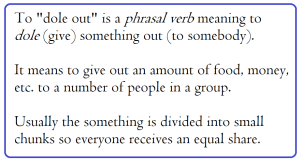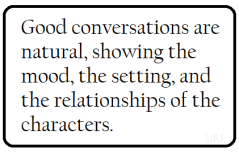Much of my blog revolves around grammar and the mechanics of writing, the fundamental force that holds the written universe together. Grammar is gravity, and punctuation is the interdimensional traffic signal, ensuring our words don’t get jammed up and wreck the spacecraft that is our prose.
 Authors need to understand the rules of how the language we write in works. When we are just starting out, we might have a grip on the basics, but we don’t understand how or when to use the rare punctuations.
Authors need to understand the rules of how the language we write in works. When we are just starting out, we might have a grip on the basics, but we don’t understand how or when to use the rare punctuations.
So, what about these rare beasts? First up is the ellipsis, the mysterious symbol we all love.
I recommend against using too many ellipses because many authors use them incorrectly or inconsistently.
This is because ellipses are not punctuation and shouldn’t be used as such. They symbolize omitted words and are not punctuation. When the conversation trails off, you must add ending punctuation.
Apples…more apples, rotten, lying on the ground. But I have no apple tree, so where did they…?
Hyphens are not always necessary. If the meaning of a compound adjective is apparent when written as two separate words, a hyphen is not needed.
- bus stop
If its meaning is understood when written as one word and common usage writes it as one word, again a hyphen is unnecessary.
- afternoon
- windshield
Some combinations of “self” must have a hyphen:
- self-editing
- self-promotion
Dashes are not hyphens and are used in several ways. One kind of dash we frequently use is the ‘en dash,’ which is the width of an ‘n.’ UK usage often employs the en dash in the place of the em dash.
En dashes join two numbers written numerically and not spelled, in US usage.
- 1950 – 1951
To insert an en dash in a Word document: type a single hyphen between two words, with a space on either side. When you hit the space bar after the second word, the en dash will lengthen a little, making it slightly longer than a hyphen.
Em dashes are the width of an “m” and are the gateway to a terrible addiction. To make one, key a word, don’t hit the spacebar but do hit the hyphen key twice, then key another word and then hit the spacebar: (word+hyphen+hyphen+word+space) word—word.
Authors and editors become habituated to using em dashes without thinking. After a while, the author types a word, and the little finger hits that hyphen key twice whenever the mind pauses—then types another word and bam!—em dash. Too many em dashes—like salt—ruin the flavor of the prose.
It often works best to rephrase things a little and use a comma or a period. I try to only use em dashes for emphasis, and only rarely.
 This bring us to creative punctuation, such as the symbol “!?.” An exclamation point followed by a question mark, these mutant morsels of madness are called “interrobangs.”
This bring us to creative punctuation, such as the symbol “!?.” An exclamation point followed by a question mark, these mutant morsels of madness are called “interrobangs.”
Editors working in the publishing industry will tell you that the interrobang is not an accepted form of punctuation for anything but comic books, graphic novels, manga, and possibly, text messages to your BFF.
Think about it. Comic book authors are limited to the words they can fit onto a panel and still leave room for the art. They must show events and emotions by combining pictures with as few words as possible to tell the story.
Writers of comics frequently employ creative punctuation to express as much as possible with few words. Interrobangs are a shorthand for the reader. They convey the emotions of shock and surprise without words.
Interrobangs are inappropriate in any other genre. It’s your narrative, so you will do as you see fit. However, more than one punctuation mark at the end of a sentence is not accepted in the literature of any genre but comic books. Interrobangs are a writing habit the professional writer will avoid if they want to be taken seriously.
 The semicolon. This joining punctuation is not complicated once you know the one rule about when to use semicolons:
The semicolon. This joining punctuation is not complicated once you know the one rule about when to use semicolons:
- If you join two clauses with a semicolon, each clause must be a complete sentence, and they must relate to each other. In other words, they must be two short sentences expanding on ONE idea.
I drive a red Corvette, and we like it. Rover rides shotgun
I drive a red Corvette; we like it. Rover rides shotgun.
I drive a red Corvette and we like it, but Rover rides shotgun.
We don’t separate all three clauses with a comma in the first two examples because that creates a comma splice. The first sentence is one whole idea: they drive a red car that they like. The second sentence is an entirely different thought: the dog likes to sit in the passenger seat.
The comma splice is a dead giveaway that the author isn’t well versed in grammar. Microsoft’s editor app sometimes tells us to use a comma to join two independent clauses when they don’t relate to each other. Microsoft is wrong.
In my opinion, the third example is the best. Conjunctions and a comma join the three independent clauses, and they flow smoothly.
Colons are rarely used in narrative prose but are common in how-to guides. Their purpose is to lead off lists of items or tips.
So, how do we separate independent clauses, words that can stand on their own as a sentence, with proper punctuation instead of ellipses or hyphens? We use coordinating conjunctions.
A comma should be used before these conjunctions: and, but, for, nor, yet, or, and so to separate two independent clauses. They are called coordinating conjunctions because they join two elements of equal importance.
However, we don’t always automatically use a comma before the word “and.” This is where it gets confusing.
 Compound sentences combine two separate ideas (clauses) into one compact package. A comma should be placed before a conjunction only if it is at the beginning of an independent clause. So, use the comma before the conjunction (and, but, or) if the clauses are standalone sentences. If one of them is not a standalone sentence, it is a dependent clause, and you do not add the comma.
Compound sentences combine two separate ideas (clauses) into one compact package. A comma should be placed before a conjunction only if it is at the beginning of an independent clause. So, use the comma before the conjunction (and, but, or) if the clauses are standalone sentences. If one of them is not a standalone sentence, it is a dependent clause, and you do not add the comma.
Take these two sentences: She is a great basketball player. She prefers swimming.
- If we combine them this way, we add a comma: She is a great basketball player, but she prefers swimming.
- If we combine them this way, we don’t: She is a great basketball player but prefers swimming.
The omission of one pronoun makes the difference. In my opinion, it’s a better sentence.
Readers expect words to flow a certain way, but no author gets it right all the time. If you choose to break a grammatical rule, be consistent about it. Authors must know the rules to break them with style.
Most readers are not editors. They will either love or hate your work based on your voice, but they won’t know why. Voice is how you break the rules, but you must understand what you are doing. You must do it deliberately and do it consistently. Readers do notice inconsistencies.
Craft your work to make it say what you mean, in the way you want it said. Sometimes you will use commas in places where they ordinarily aren’t used. You will do this to make things clear. Conversely, you will omit them for the same reason.
If the editor you hired asks you to change something you did deliberately, you are the author.
 Explain why you want that particular grammatical no-no to stand, and your editor will most likely understand. If you know the rule you are breaking, you will be better able to explain why you are doing so.
Explain why you want that particular grammatical no-no to stand, and your editor will most likely understand. If you know the rule you are breaking, you will be better able to explain why you are doing so.
Most good editors will do as you ask, but you must be prepared to break that rule consistently.
Much of what we consider powerful writing violates a number of grammar rules, but the author broke that rule in every sentence. Once the reader gets the feel for the author’s style, they don’t notice it.
I always think we are better for having read their work.
Previous posts in this series:
How the Written universe works part 1: the connecting particle
How the Written universe works part 2: the physics of conversation
How the Written Universe Works part 3: Lay, Lie, Laid
How the Written Universe Works part 4: Relativity and Possessives #amwriting

 First up is the particle. In grammar, a particle is a word with a specific purpose that depends on the words around it. It is a function word that is always associated with another word or phrase to impart meaning.
First up is the particle. In grammar, a particle is a word with a specific purpose that depends on the words around it. It is a function word that is always associated with another word or phrase to impart meaning.
 Today’s readers have no patience with Tolkien’s style of paragraph-long compound sentences composed of clause after clause divided by conjunctions, commas, and semicolons.
Today’s readers have no patience with Tolkien’s style of paragraph-long compound sentences composed of clause after clause divided by conjunctions, commas, and semicolons. I try to limit idioms and phrasal verbs to speech, and then only to that of one character. When used in conversation, they sound natural, but even there, I go lightly. I want to show a specific character’s personality but don’t want my prose to feel cliché and overdone.
I try to limit idioms and phrasal verbs to speech, and then only to that of one character. When used in conversation, they sound natural, but even there, I go lightly. I want to show a specific character’s personality but don’t want my prose to feel cliché and overdone.





